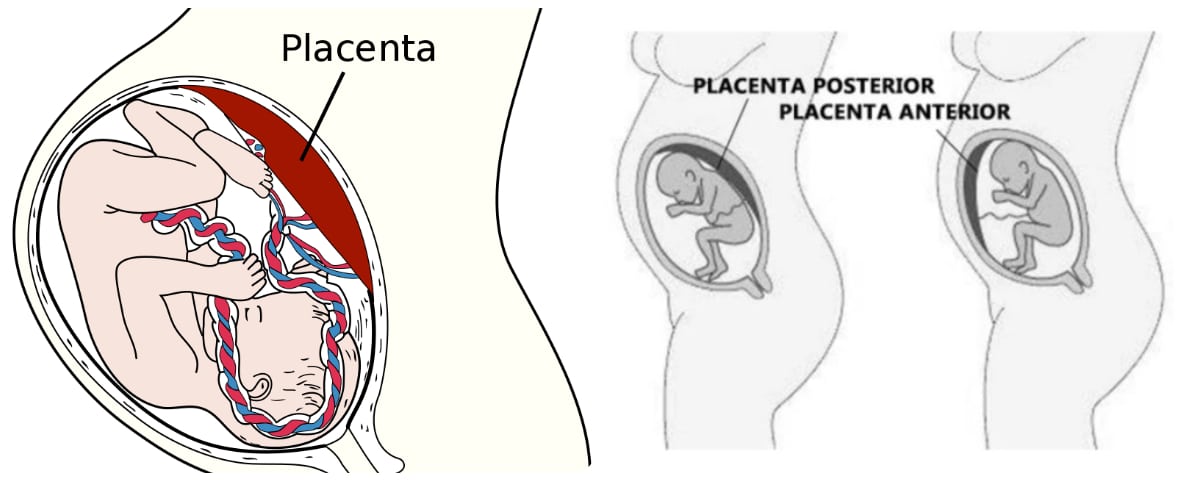
The placenta is a vital organ for the development of the baby inside the mother's womb. This structure grows inside the belly and is responsible for removing waste and to deliver oxygen and all nutrients the baby as it grows. From this area grows the umbilical cord that unites the mother with the baby. anterior placenta It has developed and located in a particular way inside the uterus and for this we are going to analyze how it develops and if its position has any type of consequence.
During medical check-ups, the type of placenta that forms inside the uterus of a pregnant woman is diagnosed. In this case we can speak of a anterior, posterior, fundic or praevia placenta (low). Its appearance is rough, irrigated by multiple vessels and veins that will be responsible for giving these nutrients and oxygen to the fetus.
anterior placenta
Placenta, as we have commented, may have different positions within the uterus of the mother. It can be located in the fundus (fundic), on the anterior or posterior face, or on the right or left side, or in the lower part.
The anterior placenta is located in the anterior part of the uterus, but it does not mean that your posture will be abnormal. It is located in the part closest to the mother's navel and that is why the future mother can notice the baby's kicks much later. In this case, it should be noted that the placenta cushions the baby's movements and the mother may not begin to notice it until 28 weeks of gestation.
In the first routine reviews and through an ultrasound, the gynecologist is the one who diagnoses the type of placenta, in this way it is recognized how the pregnancy will develop.
anterior placenta does not mean that it is prior. It can be located in the upper part, being the most normal, or in the lower part, coming in some cases to be previous. It all depends on the proximity to the exit hole.
posterior placenta
Like the anterior placenta, this type of placenta gets its name from its location in the uterus. can be found on the back face and it can also be at the top, being normal. Or at the bottom, becoming prior.
low placenta
Placenta can be located in the lower part of the uterus, and here it can represent a problem in the final stage of pregnancy. Given its location, it will present problems when giving birth, since being located above the cervix will prevent the baby from being expelled with a normal delivery. In many of these cases there may be the risk of preterm labor or the presence of hemorrhages in the last month of pregnancy. A greater follow-up by the gynecologist will be taken into account to assess how the delivery will be, in many of them a cesarean section is performed.
Consequences of the types of placenta
The presence of the placenta at the beginning of a pregnancy is located at the moment in which the zygote (embryo) attaches to the uterus and fertilization occurs. If it is implanted in the lower part of the endometrium, it will always be much better, since it is the softest area. However, a woman who has multiple pregnancies does not have to present the same placenta in the same place.
Your placement will determine if the placenta is low, anterior or posterior. It will also be determined the degrees of the placenta, the smaller, the healthier your diagnosis. For example, if the placenta is from grade 0 It means he is young. If it's from grade 2 is maturing and if it is from grade 3 it will mean that she is aged, but she can still be healthy.
It should also be noted that the uterus admits more than one placenta. We see it in cases where there is a pregnancy with more than one embryo (multiple pregnancy), where each baby can have its own placenta located in a different place in the uterus.

